Skip to main content
Copyright © 2025 by IOP Publishing Ltd and individual contributors

Skip to main content
Copyright © 2025 by IOP Publishing Ltd and individual contributors
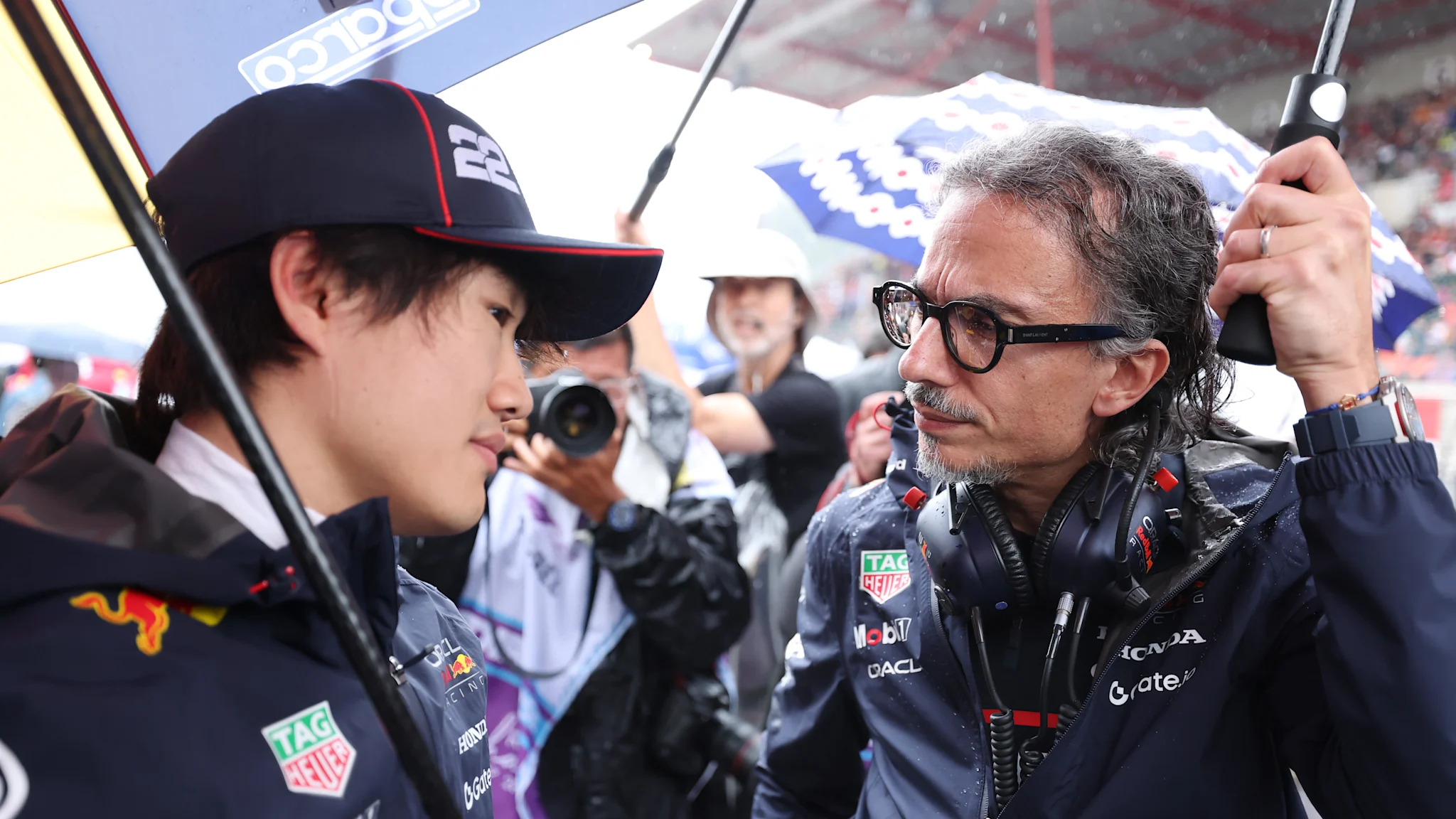
Red Bull Team Principal Laurent Mekies has declared he will support Yuki Tsunoda through his on-track struggles, while revealing the team is in “no rush” to finalise its 2026 line-up.
Tsunoda has found the going tough since his promotion from Racing Bulls to Red Bull two weekends into the season – with Liam Lawson heading in the opposite direction – with Tsunoda having failed to score points in the seven races leading up to the Dutch Grand Prix, where he managed to claim P9 to end that streak.
Amid growing speculation that the Isack Hadjar – who scored his maiden podium in Zandvoort – could replace the Japanese driver at Red Bull for 2026, Mekies was asked by Sky Sports F1 what the minimum he needed to see from Tsunoda was to avoid a swap.
“We don’t think speed can disappear,” Mekies said. “Yuki did a very good end of last year, and a very good first part of the season [with Racing Bulls].
“Of course, he has been having a rough time in the first part of the season with this team, but we take it race by race. It was a step forward in Spa. Budapest, it being our worst weekend, he was still very close in terms of pace to Max. He was a tenth and a half away from Max in Qualifying.
“Normally, if you are a tenth and a half away from Max, it is going to give you a front row. But in Budapest, it meant being kicked out in Q1. He is progressing step by step.”
On the topic of Red Bull’s 2026 line-up, Mekies added: “We are not in a rush… We try to do the best we can to support our drivers, and we certainly see some refreshed approach with Yuki and we try to support his progress.”
Much has been made of the relative drivability of the Red Bull and Racing Bulls cars, with Lawson and Tsunoda both struggling to score points in the Red Bull, while achieving their best results in the sister team.
Asked what changes Red Bull could make to get Tsunoda more comfortable with the RB21, Mekies said: “Pure development for this team, as with most teams, is now focused on 2026. However, it is key that we use these… remaining races to learn what we can on why this season hasn’t gone the way it was supposed to go.
“Especially when you are in a situation where you are not where you want to be, there are many things that you can use the race weekends to try and experiment with, and that applies to the team, that applies to the drivers, and that is the work that we are doing with both.”
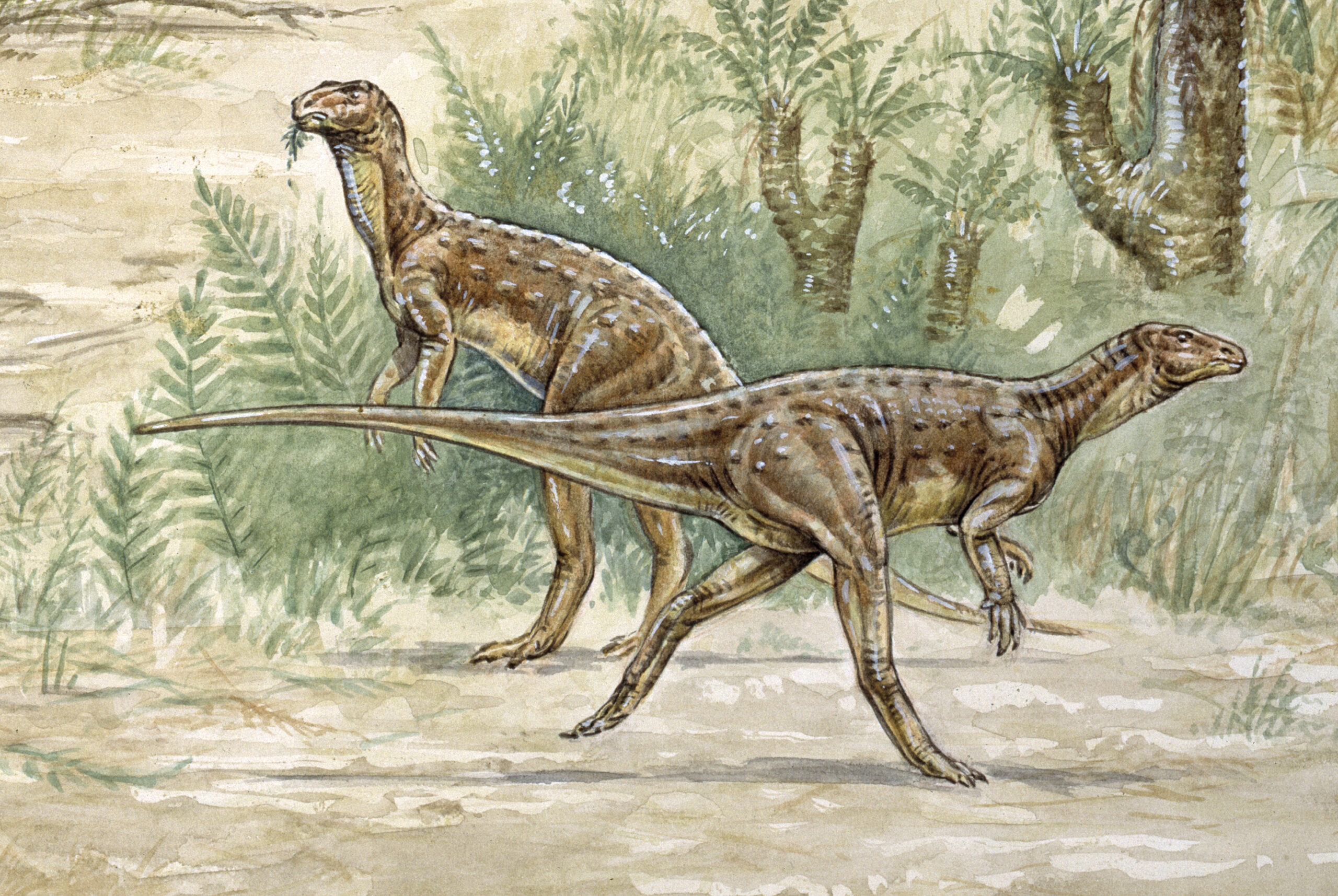
Think of a dinosaur. It’s likely that the first animals popping into your head were Tyrannosaurus, Diplodocus or Velociraptor, which all hark from the fossil-rich fields of North America and Asia, and are frequent Hollywood stars says Professor Paul Barrett from the Natural History Museum.
However, although spectacular dinosaur remains have been found all over the world, from Antarctica to Alaska, the UK dinosaur record is often overlooked. This is despite the UK dinosaur record being the most historically important and one that many scientists are still working to unravel.
The first three dinosaurs to receive scientific descriptions, Megalosaurus, Iguanodon and Hylaeosaurus, were all found in the soft sandstones and mudstones of southern England, opening the eyes of scientists and an incredulous public to the existence of past worlds that were populated by animals radically different from anything alive today.
These three were later selected to form the core of a newly recognised group, Dinosauria, which was named in 1842 by prominent anatomist Sir Richard Owen (founder of the Natural History Museum, London). Since then, rocks of Triassic, Jurassic and Cretaceous age from across the UK, with a record spanning from around 220–100 million years ago, have continued to yielded new and important dinosaur fossils, from many corners of the British Isles.
This is the least well-known of the three animals which were used to found Dinosauria, but undeservedly so. Known primarily from a single partial skeleton and a handful of other bones, Hylaeosaurus was a relatively small (3–4 m long) dinosaur and a member of the tank-like armoured group Ankylosauria. In addition to the numerous stud-like bones embedded throughout its skin, its armour also included a series of impressive, curved shoulder spines, all of which would have deterred attacks from most would-be predators.
The remains of Hylaeosaurus were first described in 1833 by Gideon Mantell, a Sussex country doctor who made many of the first dinosaur discoveries. It has the distinction of being the first armoured dinosaur to have been discovered anywhere in the world.
The known specimens all come from Early Cretaceous rocks (around 140 million years old) around Cuckfield and Hastings in Sussex, but we have yet to find a complete skeleton. Like other ankylosaurs, Hylaeosaurus was a herbivore that would have browsed on ferns and other low-growing plants and it walked on all fours.
A reconstruction of Hylaeosaurus can be found among the famous statues at Crystal Palace Park in southeast London, although modern reconstructions have updated this image.
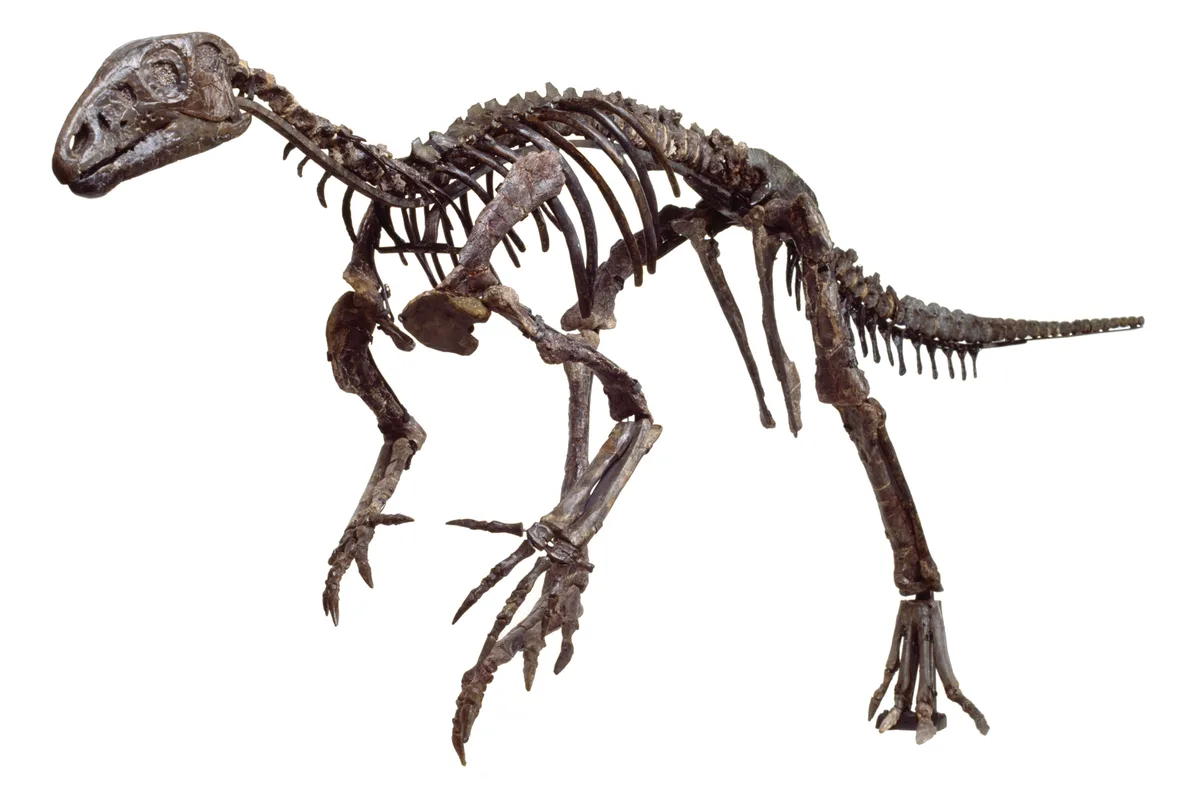
Until recently dinosaurs were depicted as lumbering brutes, but vast amounts of new work have overturned this view and revealed them as dynamic, active animals. Nevertheless, a consistent exception to this earlier rule was Hypsilophodon, a bipedal, lightly-built species that has always been regarded as a speedster and the dinosaur equivalent of a gazelle.
Its slender hind legs and long counterbalancing tail anchored powerful muscles, which allowed this small, defenceless animal to outrun and out-manoeuvre most predators. Many skeletons of this dinosaur athlete have been found, providing us with one of the most complete pictures of how small plant-eating dinosaurs looked and behaved.
Hypsilophodon has also been an important animal for understanding the origin and evolution of its later relatives, like Iguanodon and the duck-billed dinosaurs.
Strangely, however, all of the skeletons we have are of youngsters: no adults have been found. All known Hypsilophodon remains come from a single thin layer of sandstone on the Isle of Wight, which dates from the Early Cretaceous period (~125 million years ago). Its currently thought that of these animals belonged to a single herd, which was wiped out in a single tragic event, such as a flash flood or miring in quicksand.
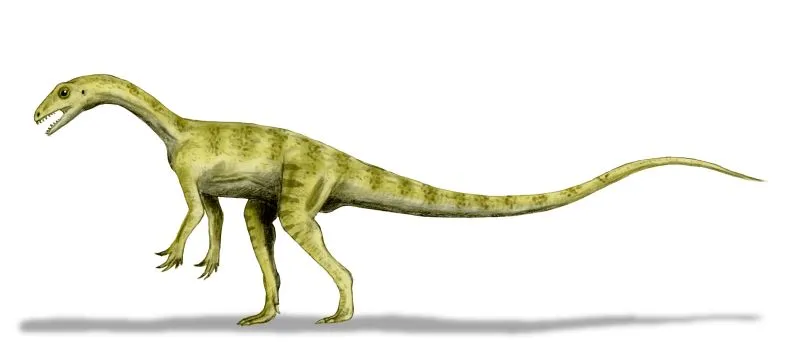
By Nobu Tamura (http://spinops.blogspot.com) – Own work, CC BY 3.0, https://commons.wikimedia.org/w/index.php?curid=19459514.
Pantydraco is one of the oldest dinosaurs known from the UK, with fossils dating back to the Late Triassic around 210 million years ago. Its fossils come from what is now southern Wales and Bristol, but during the Triassic the area looked quite different with several large islands set in a tropical sea. Pantydraco is a sauropodomorph dinosaur – a member of the same group that went on to include giants like Brachiosaurusand Diplodocus.
Unlike its later relatives, Pantydraco was small (no more than 1.5 m in length), ran on its hind legs and might have eaten both plants and animals. It had a small skull, a long neck and hands that were adapted for grasping, each with a large thumb claw that might have been for defence or to help in gathering food. It is named after the Welsh quarry where the fossils were first found, meaning ‘dragon from Pant-y-ffynnon’.
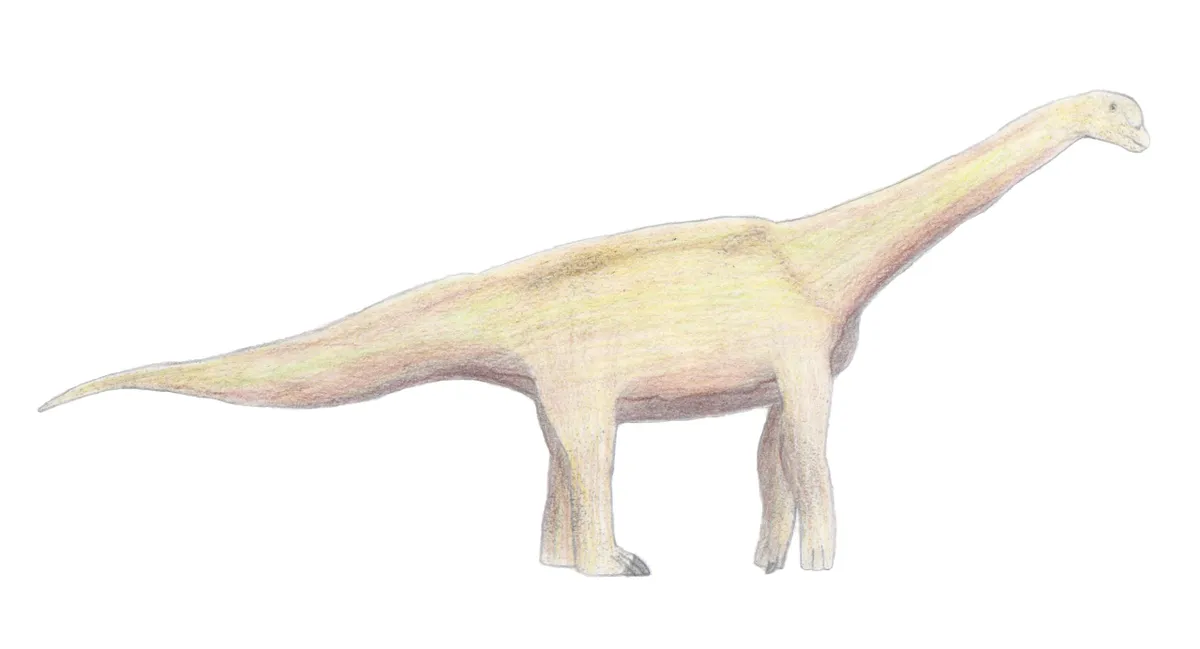
Most of our knowledge of dinosaur biology is built on bones, using their shapes, sizes and arrangements to reconstruct the animal’s overall appearance, as well as providing many of the clues used to infer important behaviours such as feeding and walking.
However, bones are just one of the many lines of evidence that palaeontologists can use, and other types of dinosaur fossils offer unique and important insights into dinosaur lifestyles, such as footprints or preserved gut contents. Sometimes we are fortunate enough to get the remains of dinosaur skin, which might be either scaly or feathered.
The first dinosaur skin impression found anywhere in the world was discovered in the UK, from the Early Cretaceous rocks of Sussex. It was described in 1852 (again, by Gideon Mantell) and was found together with two large arm bones. Although known from relatively meagre material, these bones are distinctive enough that they can be recognised as a distinct species: Haestasaurus becklesii.
Haestasaurus was a sauropod dinosaur and probably a close relative of animals like Camarasaurus from the USA. The skin impression shows that the body would have been covered with thousands of closely-packed polygonal scales, in an arrangement similar to those of many living reptiles.
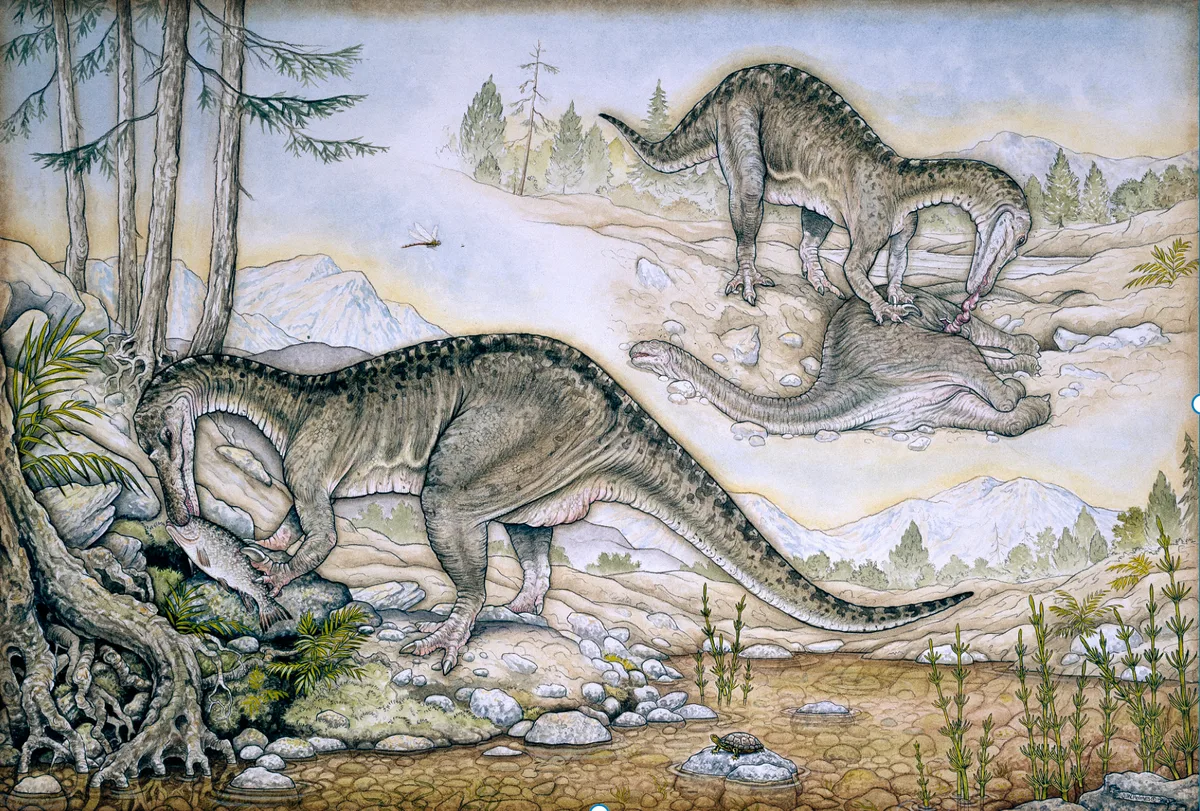
In 1983, Bill Walker, an amateur palaeontologist, made a stunning discovery in a Surrey clay pit – the enormous claw of a theropod (meat-eating) dinosaur. The claw was unlike that of any other theropod and further excavation at the site uncovered one of the most complete theropod skeletons ever found in Europe. More surprising was that the new animal belonged to a theropod group that was very poorly known.
Analysis of the fossil showed that it shared many similarities with a famous, but poorly understood, dinosaur from north Africa: Spinosaurus. The new species was named Baryonyx walkeri in honour of its discoverer and the enormous hand claw, which measures 30 cm in length (Baryonyx means ‘heavy claw’).
Like Spinosaurus, Baryonyx has a long, almost crocodile-like snout, which was lined with over 200 conical teeth. These skulls are not adapted for ripping through flesh, as in most other meat-eating dinosaurs, but for impaling more slippery prey, namely fish. The huge claw would have been used to whisk fish from rivers and lakes as Baryonyx prowled through the shallows. We are sure that Baryonyx was a fish-eater for another good reason: in the region where its stomach would have been palaeontologists found a preserved set of partly digested fish scales.
Discover more fascinating dinosaur facts

Professor Paul Barrett is a researcher at the Natural History Museum in London, centring on the evolutionary palaeobiology of dinosaurs and other amniotes.
Main image: An artistic representation of Hypsilophodon. Trustees of the Natural History Museum

The joint project began when a nine-year-old boy came to Prof. Shoshana Greenberger’s clinic at Sheba’s Safra Children’s Hospital with severe shortness of breath and was diagnosed with KLA. Seeking to deepen understanding of the disease, Greenberger approached Prof. Karina Yaniv, of Weizmann’s Immunology and Regenerative Biology Department, who for over two decades has been studying how blood and lymphatic vessels form, using zebrafish models.
In KLA, lymphatic vessels become abnormally enlarged and distorted, which keeps the lymphatic system from properly doing its job: draining fluid from tissues and supporting many essential bodily functions. As in the case of the boy treated by Greenberger, what typically brings young patients to the doctor is difficulty breathing caused by fluid buildup in the chest, but the disease also affects the skin and numerous other organs
“It was an amazing moment. Just by looking at these mutant embryos, I knew we were on the right track”
In earlier work led by Greenberger, her team at Sheba had traced the disease to a single mutation in a gene called NRAS, known to act as an oncogene. Physicians around the world started treating patients with certain cancer drugs that block NRAS or its partners, but these drugs are not always sufficiently effective and they come with harsh side effects. They failed to save the life of Greenberger’s patient, but the boy’s cells became the basis of research into the mechanisms of KLA.
“We wanted to be sure the mutation we had found really causes KLA and learn how it does that, in the hope of finding a better therapy,” says Greenberger, who heads the Multidisciplinary Center for Vascular Anomalies at Sheba. “That’s what led us to the collaboration with Weizmann.”
Zebrafish became powerful allies in this research not only because their embryos are transparent and develop rapidly, but also because their lymphatic systems share a surprising number of features with those of humans, from genetics to anatomy. The project – jointly spearheaded by Greenberger and Yaniv and led by Dr. Ivan Bassi, a postdoctoral fellow in Yaniv’s lab – began with creating a zebrafish model of the human disease. This model was initially validated by Amani Jabali, an MSc student supervised by Greenberger and Yaniv.
Since the human NRAS gene is about 80 percent identical to the zebrafish version and activates similar biochemical pathways, the researchers were able to insert the mutated human gene, taken from the cells of Greenberger’s patient, into tiny zebrafish embryos. The challenge was to ensure that the mutated gene was expressed in the lymphatic vessels alone, as it is in human disease, and nowhere else in the body. Once this was achieved, the embryos developed lymphatic abnormalities that bore a remarkable resemblance to those of human patients.
“It was an amazing moment,” Yaniv recalls. “Just by looking at these mutant embryos, I knew we were on the right track.”
The main lymphatic vessel of the embryos became grossly distorted, causing their hearts to become dilated and balloon. Further examination confirmed that these embryos shared key features with human KLA patients, including enlarged lymphatic vessels and swelling around the heart.
Using their model, Bassi and colleagues deciphered previously unknown aspects of the disease mechanism. In healthy cells, NRAS triggers cell division only when activated by a signal. In KLA, the mutated NRAS is stuck in the “on” position, causing lymphatic cells to divide and grow uncontrollably.
The next critical step was finding a small molecule that could block the effects of the disease-causing mutation. Zebrafish embryos were perfect for this task because they enabled the testing of potential drugs on a living organism, not just isolated proteins or cells. But they also posed a major headache. High-throughput screening, the standard method for quickly testing large numbers of compounds, is normally automated. The tricky part was figuring out how to get each zebrafish into exactly the right position under a microscope – without doing it by hand – so that a machine could capture consistent images and assess the effects of treatments.
Working with collaborators, the team designed a clever automated system, in which each embryo was gently dropped into a precisely fitting slit under the microscope, where it was photographed. Then, an AI-based algorithm outlined the entire body of the larval fish and measured its area after exposure to each drug. Because the mutant fish had enlarged hearts, their total body area was significantly greater than normal, an effect expected to decrease after treatment with an effective drug.
Using this setup, the team screened about 150 small molecules, all of them existing drugs already approved for other uses. About 30 showed promising effects; two top candidates were ultimately selected through further testing.
Both these drugs reversed the KLA-like symptoms in the zebrafish model: The ballooned heart and main lymphatic vessel shrank back to their normal size and shape. To test whether these drugs might help treat the human disease, the Sheba team applied them to lymphatic cells from Greenberger’s KLA patient. The two compounds had a striking effect, blocking the cells’ abnormal sprouting, a hallmark of the disease. Importantly, both drugs have a better safety profile than the cancer drugs physicians use today to treat KLA, meaning they could cause fewer side effects.
“We hope a clinical trial will be launched soon to evaluate these drugs in patients,” Greenberger says. “Since KLA is a rare disease, we will work toward creating a multi-center collaboration to bring together enough participants.”
Meanwhile, Yaniv’s lab is using zebrafish models to explore other lymphatic disorders and to further investigate KLA. One question still puzzles them: Why does the NRAS mutation severely damage lymphatic vessels but leave veins and arteries untouched? Solving this mystery could lead to entirely new therapeutic strategies.
“These are longer-term questions,” Yaniv says, “but what we’ve found in the present study could help patients much sooner. Since the drugs we identified are already approved, getting them repurposed for KLA could move much faster than starting from scratch.”
Reference: Bassi I, Jabali A, Levin L, et al. A high-throughput zebrafish screen identifies novel candidate treatments for kaposiform lymphangiomatosis (KLA). J Exp Med. 2025;222(11):e20240513. doi: 10.1084/jem.20240513
This article has been republished from the following materials. Note: material may have been edited for length and content. For further information, please contact the cited source. Our press release publishing policy can be accessed here.

Having presented well over 1,000 episodes of the much-loved BBC Radio 4 series, Melvyn Bragg has made the decision to step down from In Our Time following the series which aired earlier this year. Melvyn has presented every episode of In Our Time since the series first launched in 1998.
In Our Time is regularly one of the BBC’s most listened to on-demand programmes around the world, its appeal spanning generations. It is one of BBC Sounds’ most popular podcasts amongst under 35s.
Over the last quarter of a century, Melvyn has skilfully led conversations about everything from the age of the Universe to ‘Zenobia’, Queen of the Palmyrene Empire. He has welcomed the company of the brightest and best academics in their fields, sharing their passion and knowledge with a fascinated audience right around the globe.
While he will be much missed on In Our Time, Melvyn will continue to be a friend of Radio 4 with more to come to celebrate his extraordinary career, and a new series in 2026 (details to be announced soon).
Melvyn Bragg says: “For a programme with a wholly misleading title which started from scratch with a six-month contract, it’s been quite a ride! I have worked with many extremely talented and helpful people inside the BBC as well as some of the greatest academics around the world. It’s been a great privilege and pleasure. I much look forward to continuing to work for the BBC on Radio 4. Thank you for listening.”
Melvyn first joined the BBC in 1961 as a general trainee. His BBC career has spanned the World Service, a ten-year stint presenting Radio 4’s Start the Week from 1988 – 1998 as well as numerous arts and culture programmes. He is an Honorary Fellow of the Royal Society and of The British Academy and was given a Peerage in 1998 and a Companion of Honour in 2017. Melvyn will continue to work with the BBC on future projects which are yet to be announced.
Tim Davie, BBC Director General, says: “Melvyn’s passion for the arts, his intellectual curiosity, and his unwavering commitment to public service broadcasting over the last 60-plus years have enriched the lives of millions. Through In Our Time on Radio 4 he has brought depth, insight, and humanity to our airwaves every single week for more than a quarter of a century. He leaves behind not just an extraordinary body of work, but a gold standard of broadcasting and interviewing excellence that will inspire generations to come.”
Mohit Bakaya, Director of Speech and Controller of BBC Radio 4 says: “Melvyn has been part of the heartbeat of Radio 4 for over three decades. His fierce intellect, coupled with a wonderful curiosity and extraordinary passion for knowledge marks him out as one of the broadcasting greats. Though we will miss him on In Our Time, he leaves behind a unique legacy: the treasure trove of over 1,000 archive episodes, which are a wonderful resource for all those with a love of learning. I look forward to working with him on new projects for Radio 4.”
To mark the end of an era, later this year Radio 4 will be airing some of Melvyn’s most cherished episodes and there will also be a curated selection on BBC Sounds chosen by some of In Our Time’s most notable fans.
In Our Time will be back on Radio 4 with a new presenter who will be announced in due course.
Biography
Melvyn Bragg was born in Wigton, Cumbria in 1939. He went to the local Grammar School and then to Wadham College, Oxford. He joined the BBC in 1961, and published his first novel For Want of a Nail in 1965. By that time he had become a Director on Huw Wheldon’s Arts programme Monitor. He worked with Ken Russell on The Debussy Film and again on The Music Lovers starring Glenda Jackson, and Isadora starring Vanessa Redgrave; he wrote the screenplay for Jesus Christ Superstar and for Play Dirty starring Michael Caine.
He left the BBC and continued to write novels which include The Hired Man (Time Life Silver PEN Award), The Soldier’s Return (WH Smith Literary Award), Without A City Wall (Mail on Sunday John Llewellyn Rhys Prize), A Place In England, Son of War and Crossing The Lines (all three were nominated for The Man Booker Prize), Now Is The Time(Parliamentary Book Award 2016). Howard Goodall wrote a successful musical based on The Hired Man. There have also been non-fiction books – The Adventure of English, The Impact of The King James Bible, On Giants’ Shoulders, Rich: The Life of Richard Burton, William Tyndale: A Very Brief History. Most of his novels are set in his native Cumbria.
In 1977 he started The South Bank Show for LWT which he edited and presented for Sky Arts. He has presented the Radio 4 programme on Science, History and Religion, In Our Time, since 1998.
He is an Honorary Fellow of the Royal Society and of The British Academy. He was given a Peerage in 1998 and a Companion of Honour in 2017.
RB2

Expectations for the music team behind Netflix’s Wednesday were always going to be high when it came to season 2, with the first installment of the reimagined Addams Family series pulling in historic numbers for the streamer when it first premiered in 2022. With 341.23 million hours watched, it broke the record previously held by Stranger Things 4 for first-week views on the platform.
But part of what made the show’s debut as successful as it was can be chalked up to its memorable musical moments, both planned and not. Everything from Jenna Ortega’s original choreography to the black dress she was wearing at a Nevermore Academy formal scene became “iconic” – as music supervisor Jen Malone tells Billboard – thanks to a perfectly creepy-crawly “Goo Goo Muck” synch, after which The Cramps also got an 8,650% streaming boost on the track. And when fans started using the scene to make edits paired with Lady Gaga’s “Bloody Mary,” the show’s popularity only continued to surge while the 11-year-old Born This Way deep cut became an unofficial yet unequivocal part of the Wednesday universe.
Naturally, three years later, fans of the series weren’t just going to be dying to see how Wednesday Addams (played by Jenna Ortega) would return to handle her unfinished business with love interest-turned-killer monster Tyler Galpin — and solve the mystery of her anonymous stalker — they would also be expecting even more inspired musical choices. Adding to the pressure was Mother Monster herself joining the show, with Gaga coming aboard to play the ghost of a deceased Nevermore professor — who at one point sends Wednesday down a dangerous path as she tries to regain her psychic abilities – and contribute an original song titled “The Dead Dance” to the show.
But just as Miss Addams always seems to find a way out of trouble – near-death experiences included – the Wednesday music team absolutely rose to the occasion on season 2, particularly shining on the second batch of episodes that premiere Wednesday (Sept. 3). Below, Malone, co-supervisor Nicole Weisberg and composer Chris Bacon tell Billboard all about how they pushed the show’s sonic world into even darker territory, while simultaneously subverting viewer expectations with an Enid-approved BLACKPINK tribute, honoring the Addams family’s Hispanic roots, working with Gaga and more.
(Also, beware – spoilers for the second half of Wednesday are fair game beyond this point!)
What was it like to score music for Lady Gaga’s scenes? Did you take any cues from her performance on screen while composing?
Bacon: It was naturally very exciting to see Lady Gaga pop up on screen, but it was also just treating her like she’s any other character. What is her job? What is her role in this story? Who is who is her character? What is her emotional arc? She brings a certain mythology with her, and there’s a certain mystery and maybe a hint of darkness to her, just like everybody in the Wednesday universe. So it was fun to get to play with that musically.
She delivers her performance in a very specific way, and I don’t necessarily need to add to that as much as complement it in a way. So, I played a lot with some more synthetic sounds, kind of at a higher frequency, and played with reverse effects based on what her job is in the story.
The “Bloody Mary” phenomenon from last season was almost a moment of reverse music supervision, with fans being the ones to say, “This is the song we think goes best here.” As music supervisors, what was your reaction to that, especially now seeing how it led to Gaga joining the show?
Weisberg: When we first heard about it, we were like, “What? What is happening?” That’s sort of pop culture for you at its best, evolving on its own. It has a mind of its own sometimes.
I mean, Lady Gaga is so iconic that it’s like — who knows if this would have happened on its own or not? But it was definitely a treat for all of us to see, like Chris said, someone like that popping on screen and bringing such an added element.
“Goo Goo Muck” also went crazy viral last season. Did you feel pressure to recreate that virality this time around?
Malone: We really don’t look for that, and that’s not really our job. Our job is to service the story and the characters. The song just being what it is, I think it really lent itself to that sticky moment. But we definitely do not look for or try to recreate moments that will go viral.
Like with BLACKPINK, that’s just Enid’s sound. We have used K-pop in both season one and in season two, so that was just a natural extension of her character as opposed to, you know, “Ooh, maybe this can go viral.”
As you mentioned, BLACKPINK’s “BOOMBAYAH” plays during an unforgettable sequence where Enid (Emma Myers), trapped inside Wednesday’s body (and vice versa), cheerfully frolics around campus in uncharacteristically colorful clothing. Of all the K-pop hits, why was that the perfect one?
Weisberg: Producers had this song in mind, and also, I think the nature of the song and the way the lyrics are, it kind of makes for a playful moment instead of, like, a K-pop love song. “BOOMBAYAH” and the way that song felt called for the comedic dancing that was going to go with it. But really, Jenna brought that whole sequence to life.
When we got the script, we were pretty certain it was going to play well, just the counterpoint of her and Enid. The body-switch episode was definitely a really great script to receive. You’re kind of already imagining what it could be.
Do you think Enid is a BLINK?
Weisberg: I think she’s a fan. Most people that age are.
I think season one, it was more like, “Oh, she’d probably be into K-pop.” And then — I mean, it definitely hasn’t gotten less popular. So I think it sort of made sense to stay aligned there. When you think about, like, KPop Demon Hunters and what that’s doing right now on the charts … it’s sort of taking over, more so than pop music from the 2000s might have been. I think anyone her age is definitely aware of K-pop at this point.
I bet Enid would love KPop Demon Hunters.
Weisberg: Yeah. I’m sure she would too.
Malone: On many levels. [Laughs.]
How much was Jenna involved in the music this season?
Weisberg: She’s always involved in the cello, in her moments, for sure. She makes playlists, she’s really into being a part of that.
Malone: She works very closely with her cello teacher because she has to get these pieces well in advance to learn. And she’s definitely involved in giving us notes and helping us get these songs arranged to where they need to be.
This season, there seemed to be more allusions to the Addams family’s Hispanic roots, like when Gomez (Luis Guzmán) takes a shower while singing along to “Besame Mucho.” How much did you think about their heritage while crafting the music in S2?
Bacon: From a score standpoint, Morticia (Catherine Zeta-Jones) and Gomez were much more involved this season, and they had more specific moments to themselves and also in conjunction with Wednesday. I think there were some more overt Latin elements this season as well. I mean, you have Catherine Zeta-Jones and Jenna Ortega in a blindfolded duel, and it was fun to introduce little guitar elements every now and then that could kind of connect to that, or to have an accordion presence that would come in with Gomez’s over-the-top romantic gestures.
We’re not trying to paint it too heavily, but just kind of nod to those moments.
Weisberg: I would say it’s a pretty large part of forming their playlists. That is a big conversation point on our end, like, ‘What kind of Latin songs can we include that would make sense?’ The tango in episode three was definitely a fun way to allude to the traditions of Addams family past, but kind of bring it to now.
“Besame Mucho” was a great choice for the comedy of the moment, while also speaking to [Gomez’s] roots. There’s an artist we use in the first episode, Chavela Vargus, that we used in season one for a Wednesday moment. It’s sprinkled in there. I don’t know how much the audience notices that happening, but it’s definitely a large part of their musical palettes.
You also reimagined The Cranberries’ “Zombie” and R.E.M.’s “Losing My Religion” as instrumentals this season. What went into utilizing those songs?
Malone: These were songs that have been on our playlist from season one that we were able to use in season two.
Weisberg: I really like “Zombie.” I don’t think we’ve had a piano element before. But the way the sequence turned out, it’s playing over so much plot. It’s always nice when you can milk a use, for lack of a better term, like, just have it extend and play across multiple things and apply multiple ways. And I think that melody, everyone knows it at this point. As soon as it comes in, I feel like it sort of sets a tone for that long montage.
Bacon: I think what’s fun about that moment specifically is that it plays so differently from the original version. It’s almost subconscious a little bit, until you realize, “Oh, wait, I’ve heard this before. What is this?” But it doesn’t distract you from it. And that’s where I think some of the magic happens, is that there are a lot of layers happening there, and you hear this beautiful, romantic piano version of this anthemic rock song. And then to have it happening over a prison break with zombies eating brains and things like that, there are a lot of layers that go into making it land in a unique way.
What would you say are the biggest differences between the music in season one and two?
Weisberg: Expanding on Morticia and Gomez as characters. They weren’t as present in season one, so kind of getting to dig into: What are the Morticia songs? What are the Gomez songs? That was a really fun shift.
Bacon: I think from my standpoint, it’s just bigger. You haven’t seen the finale yet, but it’s sort of, like, epic moment after epic moment after epic moment. It’s very cinematic and ambitious, but also really delivers in a way that’s very satisfying. Getting to utilize those [musical] tools of cinema for what we call TV – although, who knows what TV is anymore? – it felt very expanded and dramatic.
Malone: Everything was much bigger this season, even plotwise. There’s so much going on, and there are so many new characters. So, being able to just expand the musical palette a little bit, but still stay very true to our roots and what we built in season one … this season we had just a little bit more opportunity.
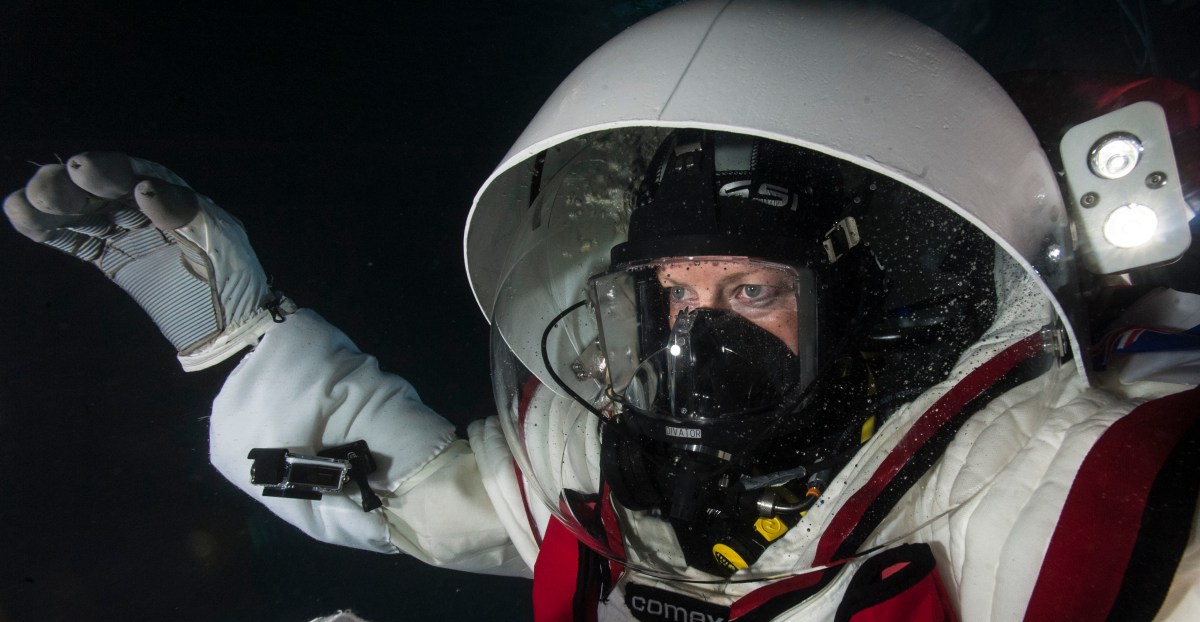
One day, Mars might become a home to humans. But first, there’s the cinematic, sci-fi challenge of making the Red Planet suitable for life. There’s a problem, though: The typical person can’t get to space safely. That throws a wrench into the whole “let’s move to Mars” plan in the face of extreme climate change and other existential risks on Earth.
Today, the path to becoming an astronaut is “littered with the hopes and dreams of medically disqualified candidates,” said Shawna Pandya, a research astronaut with the International Institute for Astronautical Sciences (IIAS) and the director of its Space Medicine Group. “Once upon a time, kids being diagnosed with Type 1 diabetes in the doctor’s office would be told, ‘Well, you could still be anything, except an astronaut.’”
Here are some of the common reasons why you might be medically disqualified from becoming an astronaut:
Astronauts inherently aren’t representative of the broader population — they’re selected for being in very good health. The stress of existing in essentially weightless microgravity conditions, like those on the International Space Station (ISS), can be incredibly tough on the human body. Astronauts face heightened risks of early-onset osteoporosis, insulin resistance, and significant muscle mass loss. Naturally, government space agencies want people whose bodies are more resilient to such pressures, and who can perform necessary duties without a ton of medical intervention.
According to Haig Aintablian, director of the UCLA Space Medicine Program, “just as pregnancy causes the body to undergo complex and unique changes, spaceflight also produces distinct and significant physiological changes.” It also requires its own medical specialty to manage (aptly called space medicine).
There’s a lot scientists don’t know, from the physical to the psychological. That’s a problem — for the future of science, space travel, and maybe even human existence at large.
NASA wants to go to Mars for research, and aims to send humans there as early as the 2030s. As the most similar planet to Earth in our solar system, Mars may have once harbored life, or may even currently. And in the future, we may even need it to support us.
Decades ago, seriously engaging with the idea of moving to Mars was extremely fringe for a multitude of reasons, ranging from a lack of technical feasibility to the desire to put scientific resources toward solving problems on Earth. Elon Musk — founder of the spaceflight company SpaceX — became a famed advocate for colonizing Mars in the early 2000s. He still is. Musk, who is currently worth around $410 billion, claims that he is only accumulating assets for the purpose of Martian space settlement. Last year, he said that he wants 1 million human settlers on the Red Planet in a self-sustaining city by 2050.
Now Musk isn’t alone. NASA experts, biologists, academics, futurists, disaster resilience researchers, and physicians are seriously considering the possibility of making humanity an interplanetary species.
“The biggest problem for humanity to solve is the guaranteed survival of our species — which the logical answer is to become multiplanetary,” Aintablian said. “I don’t think there’s a better solution than Mars.”
While we know some of the health effects of being on the ISS, we can’t really replicate the effects of Martian radiation exposure. Kelly Weinersmith — a biologist and co-author of A City on Mars: Can We Settle Space, Should We Settle Space, and Have We Really Thought This Through? — thinks that settling Mars on Musk’s timescale will be catastrophic. She argues that we shouldn’t rush to set up shop before understanding — and mitigating — the risks, even if this takes centuries rather than decades.
But many advocates for settling Mars are much more impatient. The only way to get there safely would be to unlock significant advances in space medicine, a nascent field that has just barely scratched the surface in its approximately 75-year history.
“Nothing that humanity has done that has been worthwhile has been easy,” Aintablian told me. “So much in our development as a civilization has been difficult, and the reason why we’re able to live such comfortable lives now is because of the extremely difficult challenges that humans have had to solve in the past.”
Since extremely few people end up in space right now, the researchers trying to understand how to improve human health there have a limited sample size to work with. Yuri Gagarin became the first human in space in 1961, and more than 600 astronauts have followed him. Only about a sixth of them are women.
NASA researchers have identified some key ways that time in space can impact human health — radiation exposures, isolation, distance from Earth, altered gravity, and environmental consequences like an altered immune system. But we’re still lacking many specific examples of how these different dynamics play out in real life.
One of the best studies we have is NASA’s famous 2019 twins study. Twin studies allow researchers to separate the effects of genetic predispositions from environmental influences on health outcomes. NASA compared the health of identical twin brothers Scott and Mark Kelly over the course of a year. Scott went into orbit on the ISS while Mark remained on Earth. Both underwent the same battery of physiological tests, and the results indicated some surprising new differences between the two men.
Scott’s telomeres — the bits of DNA at the end of our chromosomes — lengthened while he was in space and (mostly) reverted to normal once he returned to Earth, possibly indicating radiation-induced DNA damage and potential increased cancer risk. Scott also lost body mass, developed signs of cardiovascular damage that were not present in Mark, and experienced some short-term cognitive changes after returning to Earth.
While survivable with the right training, equipment, and precautions, the twin study demonstrated how space’s unique environment can have significant consequences for gene expression and overall health while in orbit.
If the best of the best struggle, what about the rest of us? We’re getting some insights here now, too.
Since space tourism has literally taken off, astronauts aren’t the only ones going to space now: Wealthy non-astronauts, like Jeff Bezos, Gayle King, and Katy Perry, have recently taken short, recreational jaunts into outer space through Bezos’s space tech company, Blue Origin.

Aintablian is very excited about the prospect of civilian access to space increasing, which will inherently mean people with medical issues are also flying. This represents a huge opportunity for scientists to study the medical management of a much wider range of conditions.
That said, 10 or 15 minutes in space is hardly comparable to the conditions on the ISS. And Mars poses even worse consequences in terms of hostile environments and time spent away from Earth. Mars has toxic dust, lacks plant life and a breathable atmosphere, and only has about 40 percent of Earth’s gravity. Earth’s global magnetic field protects our planet from harmful radiation, and the Martian counterparts are localized, not planet-wide.
The longest time someone has been in space consecutively is 438 days aboard a space station. But crewed missions to Mars would probably take at least nine months just to get there, let alone stay or travel back (which could take up to three years). Mars is usually around 140 million miles from Earth based on its orbital path around the sun, with up to a 20-minute communication delay one way. If they experienced a medical emergency, astronauts likely wouldn’t be able to access telemedicine instructions in time, and they couldn’t turn back around for treatment.
A crewed mission to Mars would have to take all of their supplies with them before they left our planet. And when the first people heading to Mars set foot on the planet, they won’t have access to the intense support astronauts receive when landing back on Earth.
Getting to Mars is only part of the challenge. We’ve been to space, but so far, humans have only ever sent robots to the Red Planet. We are making educated guesses at what Mars is like for living things. Earth analogues aren’t able to truly replicate the closed, hostile conditions of the space environment, which can wreak havoc on astronauts’ mental health. Desert research stations have an atmosphere, while the moon barely has one — and setting up that modest base was a huge mission in its own right. Weinersmith told me that scientists at polar research stations are isolated in remote, inhospitable environments, but they can “still open the door, take a deep breath, and not die.”
We’re still pretty far from being able to breathe in Mars’ atmosphere — but it would be nice to get there one day and simply not die.
Programs dedicated to figuring out how to get humans safely into space for long periods of time are popping up, and non-physician health care providers are getting in on the action too. UCLA is planning to launch a space nursing program and possibly space paramedic training. SpaceMed is a European master’s program focused on human health in spaceflight and other extreme conditions.
Today, astronauts receive most of their care from Earth-based aerospace medicine physicians called flight surgeons through telemedicine. Aintablian envisions a future where health care providers directly accompany astronauts on their expedition-class missions, like to the moon or Mars. Artificial intelligence can act as a resource for the on-board flight surgeon, he predicted, and aid in the development of other technologies that will bring us closer to Mars.
Such technology is already in the works. Google recently collaborated with NASA to develop an AI system that could guide astronauts in diagnosing and treating medical conditions that arise in-flight when they lack access to telemedicine.
But the devil is in the details, Pandya told me. AI can help with just-in-time training for medical emergencies and diagnostics, but the data requirements would be massive. Since extremely few people end up in space — and the ones who do are overwhelmingly male — models might be trained on an unrepresentative dataset that could lead to inaccurate predictions of physiological changes in space. These kinks need to be worked out first.
Right now, there’s a gendered gap in the research — so much so that Weinersmith told me there’s never a line to the women’s restroom at space settlement conferences. Human reproduction and development in space, as a result, is wildly understudied.
As far as we know, no human being has ever been to space while pregnant, and we don’t know of any humans who have been conceived in space. We’re going to learn a lot about reproduction on Earth from the first human space pregnancy and space birth, a prerequisite for a self-sustaining settlement on Mars. (Plus, space tourism companies are talking about hotels in space, and we know what people do in hotels.) Ideally, you want to have an idea of what will happen to someone giving birth in space before they actually go through it.
“What we’re arguing is that we should do the research to understand those risks before we go out there because if there are massive risks, there usually are technological solutions for some of these,” Weinersmith said.
NASA will begin its second Crew Health and Performance Exploration Analog this October, a year-long “mission” to Mars in a 3D-printed habitat at Johnson Space Center in Houston, where it will collect behavioral health data on the effects of isolation and confinement. Scientists are conducting bed rest studies, which simulate the physiological effects of altered gravity and weightlessness. And as funding cuts transform the future of scientific research on Earth and beyond, space medicine researchers are among those advocating for continued investment in space and biomedical science.
Maedeh Mozneb, a biomedical engineer and project scientist in the Sharma Lab at Cedars-Sinai Medical Center, told me that the ultimate goal is to send “avatars” of astronauts to space by taking their stem cells and creating 3D tissue cultures called organoids that represent different parts of their body — yes, miniature hearts, kidneys, and even brains made from Earth-dwelling humans. From there, scientists can determine personalized countermeasures such as workout plans or supplements tailored to each astronaut’s needs, before they actually end up in space.
The hope, for those space medicine physicians like Pandya, is that in a spacefaring future, all medical disciplines — from neurology to radiology — will be represented in space medicine.
Space medicine research and practice isn’t cheap. “I often get asked,” said Pandya, “‘Why are you spending money on space health when we have all of these problems on Earth?’” But that’s the wrong way to think about it, she said.
Research conducted in space has already improved health on this planet. Advances in digital imaging for moon photography during the 1972 Apollo 17 mission later played a crucial role in CT scans and MRIs. Remote health monitoring tools designed for astronauts in space are now widely used in hospitals.
Space medicine research will also allow more people to go to space. In 2023, Pandya’s team demonstrated the safety and functionality of a continuous glucose monitor in the spaceflight environment. This could eventually allow diabetics to check their blood sugar in space. It has implications for current astronauts, who can develop insulin resistance and pre-diabetes symptoms in longer-duration spaceflights. The child diagnosed with Type 1 diabetes who wants to be an astronaut may actually have the chance to live out their dream now, and studying how the body metabolizes glucose in space helps us better understand health on Earth.
Then there are the diseases that take decades to unfold. Muscle loss in space can help scientists better understand how to treat conditions like Duchenne’s muscular dystrophy. On Earth, neurodegenerative diseases like Alzheimer’s often aren’t apparent until a person is in their late 60s.
In microgravity, said Shelby Giza, the director of business development at Space Tango, a company that facilitates automated research and development in microgravity conditions, “you can see that kind of disease output in a matter of weeks.” Research on these conditions can be conducted much faster — and hopefully accelerate the pace of medical breakthroughs.
The same can be said for cancer. Not all radiation exposures are made equal, and susceptibility to the harmful effects of radiation varies between individuals. Since the ISS is within the protection of Earth’s magnetosphere, it’s not the best comparison to the elevated radiation levels astronauts would face on Mars.
According to former NASA astronaut and biologist Kate Rubins, most astronauts are healthy people in their 30s and 40s, an age when cancer typically doesn’t develop. Scientists must track astronauts for decades after their last spaceflight to see if cancer or other adverse health conditions occur. NASA’s Lifetime Surveillance of Astronaut Health program, which is voluntary for former astronauts and not specific to cancer alone, monitors the health status of people like Kelly and Rubins for the rest of their lives.
Exposure to space radiation is linked to developing cancer and degenerative diseases. To mitigate the risk of developing fatal cancers, NASA currently limits astronauts’ spaceflight radiation exposure to 600 millisieverts (mSv) — roughly the equivalent of 60 CT scans of the torso and pelvis — over the course of their entire career. A 2023 NASA white paper estimates that a healthy astronaut will have a 33 percent increased risk of dying from cancer in their lifetime after a 1,000-day mission to Mars.
One of the next big things in space medicine “is probably going to be the development of radiation protection mechanisms,” Aintablian told me. “I do believe that with the amount of emphasis being placed on radiation protection, we’re going to figure out ways to actually protect against significant amounts of radiation for the general public for multiple uses.”
While it’s still relatively early days for the space pharma industry, life science companies are taking note, seeing microgravity as a platform for better drug discovery.
Like fiber optic cables used for telecommunications, some pharmaceuticals are better synthesized in microgravity conditions. Scientists can produce more uniform protein crystals in microgravity, which can improve drug injectability and reduce the need for refrigeration.
Raphael Roettgen, an entrepreneur and the co-founder of space biotech startup Prometheus Life Technologies, told me that organoids — those 3D cell models replicating human organs — grow more cleanly in space without Earth’s gravity weighing them down. Derived from non-embryonic stem cells, these miniature organ models have tremendous potential for personalized medicine.
Roettgen hopes that human space organoids could reduce the need for animal testing in the near term. Eventually, he hopes that new organs could be regenerated for patients needing transplants. Since the new tissue would be derived from the patient’s own stem cells, there would not be a risk of immune rejection, saving transplant patients astronomical costs and immense suffering. He estimates that liver regeneration and transplants from these organoids could become a reality in patients within the next 20 years.
Microgravity is an “expensive tool,” but an important one nonetheless, said Mozneb, who studies the effects of low earth orbit on stem cell differentiation. She hopes increasing commercialization and new technologies will significantly decrease the cost of launching experiments into orbit over the next 10 years.
What we already know about space medicine is a drop in the ocean of what we will discover as more people — astronauts and otherwise — venture into space.
“It’s like if you were studying genetics back in the ’90s,” Mozneb said. “Everything is a discovery.”

On the Shelf
Eternally Electric: The Message in My Music
By Debbie Gibson
Gallery Books: 320 pages, $30
If you buy books linked on our site, The Times may earn a commission from Bookshop.org, whose fees support independent bookstores.
“I ask myself every day how different it would be if my mom was alive,” Debbie Gibson says. The singer-songwriter is contemplative and clear-voiced, which is unsurprising for a woman who has captivated audiences for decades. This August afternoon, she is on a video call from her home in Las Vegas, where the barefaced star shares a room with, as she describes it, “my Liberace piano” and a full-size carousel horse.
That horse, suspended from the ceiling, was in her music video for “Girls Night Out,” which was filmed at Planet Hollywood.
Fall Preview 2025
The only guide you need to fall entertainment.
“During the pandemic, Planet Hollywood gifted me the horse for my 50th birthday,” she explains. The piano and the massive horse aside, Gibson says her home in the Vegas suburbs is “normal and low-key. I wake up every day to views of the mountains.”
It’s a far cry from Brooklyn, where both Debbie and her mother, Diane, were born.
Gibson’s mother was her partner in crime, personally and professionally, her whole life. Gibson’s new memoir, “Eternally Electric: The Message in My Music,” could only have been this honest in the aftermath of her beloved momager’s death in 2022.
Pop star Debbie Gibson lives a “normal and low-key” life in Las Vegas.
(Denise Truscello / For The Times)
She says, “I think I did her justice and told my mom’s and my story honestly and effectively. I do think that there are several layers more candor in the book than had she still been here. Her passing deepened everything, especially the anniversary shows over the last few years. I’ve been considering the doors she broke down for a lot of young female singer-songwriters and producers. She was going to bat for all of them by sticking up for me in conference rooms, fighting for my voice and the young, female voice.
“That is so strong right now with Taylor Swift, Chappell Roan, Gracie Abrams and Alicia Keys starting out super young; all of them with this aggressiveness and soulfulness that my mom went to bat for.”
Gibson chronicles her childhood in the suburbs of New York and the peaks of celebrity — including her comeback in 2020, when her single “Girls Night Out” returned her to the Billboard charts after 30 years. From teaching herself to produce as a teenager, to death threats, panic attacks and international fame, Gibson, 54, mined decades of experience for this memoir.
She was only 16 when her debut album, “Out of the Blue,” dropped in 1987. It went triple platinum. A handful of albums in the ‘90s and early 2000s and singles of varying chart success all the way up to 2022 followed, and all the while, Gibson was singing and dancing on Broadway stages and serving as a judge on reality programs, or as a contestant in the case of “Dancing With the Stars.”
“I proposed books several times throughout the course of my career,” she says. “With my late, great momager Diane, we made the rounds but, truthfully, I hadn’t lived enough life. A publishing company wants something salacious, which I didn’t have, and that was never what I wanted to do.”
In December 2023, she immersed herself in remembering, writing and compiling a record of her life in and out of the public eye.
“It felt like such a great time at this point because I’m in a true second act, the party is still going. … I feel so grounded, so connected to my audience in a way I recall feeling back in high school. I’ve been through so many of the universal challenges and difficulties, but my story has had so many plot twists, and I’m at a point where I feel I’ve landed on my feet.”
Debbie Gibson performs in 1988, the year she became the youngest person to write, produce and perform a No. 1 hit.
(Paul Natkin / Getty Images)
Gibson was a rarity in the late 1980s, writing and producing her own work at a time when record labels saw young women and girls as pretty faces and nubile bodies delivering songs written by established male songwriters and produced by male engineers. “Out of the Blue,” which sold 5 million copies worldwide, was written and produced in Gibson’s family garage, which her mom had custom-built into a studio. Gibson set out on a tour of nightclubs and within months, the first single, “Only in My Dreams,” was No. 4 on the Billboard Hot 100. “Seeing my name printed below Michael Jackson and Madonna and immediately above Whitney Houston was surreal,” she writes.
By 1988, Gibson’s first chart-topper, “Foolish Beat,” established her as the youngest artist in history to write, perform and produce a No. 1 U.S. single, breaking the record set by George Michael. Nine months later, she repeated the feat with “Lost in Your Eyes” from her 1989 double-platinum second album, “Electric Youth.”
It was an unusual childhood, but a happy one, by Gibson’s account. “I remember the sense of joy and freedom as a young girl making music,” she says, “I had no bills, nothing on the line if I failed, so to speak. If I didn’t get a record deal, my life would go on. I don’t know quite where that self-motivation came from.”
Gibson says Diane empowered her and her sisters, so perhaps the source of her inspiration isn’t a mystery.
“My mom, my sisters — a family of mostly girls — our mom empowered us all, and she really instilled in us that we should do whatever makes us happy and that we had the power to do so. I was always doing things that are usually reserved for males. I was doing production when there were no techie girls in my town. I was a freaky, techie kid, wiring my own patchbay in the studio. I was doing whatever I had to do to get what I visualized out of those speakers.”
Debbie Gibson hugs her mom Diane before her high school graduation in Merrick, Long Island, in 1988.
(Paul DeMaria / New York Daily News Archive via Getty Images)
For the high schooler, that catapult to fame coincided with the onset of crippling panic attacks. She and her parents faced death threats and several stalkers, so Gibson had a security guard when entering and leaving hotels and tour buses. It was isolating. But the perks were undeniably big. At 18, just before setting off for the Electric Youth tour, Gibson bought her family a 10,000-square-foot house in Lloyd Harbor, N.Y. She met Princess Diana during a London trip, received praise backstage from Michael Jackson and “battled” Kylie Minogue for the same pool of dancers.
She reflects, “Some people feel like, ‘the arts are not a real job, not a real profession, and it’s too risky.’ And it is very risky. So you need parents that are as crazy as you are. And I had that, which is amazing. I wouldn’t be here talking to you now if I didn’t, and so, what a life. You know, it’s a hard life, it’s an uncertain life, but I wouldn’t have it any other way.”
While Gibson recalls some dubious, if not deeply concerning, interactions with male celebrities and executives, she insists she was never treated inappropriately. Still, she mentions Australian actor Craig McLachlan showing up to her dressing room wearing nothing but a “dance belt” to play guitar for her and a suggestion from her label that if she wanted her record to get airplay, she had to go to dinner with a radio program director, “this man old enough to be one of my school teachers.”
In 2005, the butter-wouldn’t-melt Gibson finally agreed to pose nude for Playboy, which had “called us like clockwork about every two years or so” since her 18th birthday. At 34, she rationalized that she’d already shown most of her body for her roles in the musicals “Les Misérables,” “Grease” and “Chicago.”
Gibson reflects on the thin line between what was Playboy material two decades ago and what is album cover material today. She says, “It’s so funny, because I saw the Taylor Swift artwork for her new album, and went, ‘Oh my God,’ because she’s got the cropped dark wig on and I did that exact look for Playboy. It’s so interesting that the line between showing what you need to show for it to be a Playboy shoot or not is a thin line, but that’s everything.”
She adds, “I always had a freedom about me, and Playboy was a chance to express it. It was a final frontier in breaking out of what people might have boxed me in as.”
“I’ve been considering the doors she broke down for a lot of young female singer-songwriters and producers,” Debbie Gibson says of her late mom and manager, Diane. “She was going to bat for all of them by sticking up for me in conference rooms, fighting for my voice and the young, female voice.”
(Denise Truscello / For The Times)
Four decades into her career, Gibson epitomizes the relentless drive that her momager instilled. Her performances and her music are independently produced, which is nonstop work, but that hasn’t dampened her plans for tackling even more projects.
“This whole ‘book chapter’ has been a long time coming, and continuing my own independent tour is a bitch,” she says (though it’s “bee-atch” in her intonation). “It’s a round-the-clock job, but I’m planning on expanding it internationally.”
Then, there’s the album and Broadway.
“Next on the plate is more international touring and recording my next album. I referenced some of the newer songs in the book. Writing for musical theater is definitely on the plate and possibly getting the musicals I have written off the ground. I have people ask me all the time, ‘Do you want to come back to Broadway?’ And I might, but I’d rather go back to Broadway next as a creator, as a composer and lyricist, producer, musical director and all of that.”
Creating is her “happy place,” she confesses, which sounds like a reprieve from the experience of writing her memoir.
“It was very emotional,” Gibson acknowledges. “It’s like being in therapy all day, every day, talking about your life, writing about your life.”

Hurtado made this jacket in 1947 from a horse blanket, gifted to her from Lord & Taylor. At the time, she was working on window displays for the New York department store.
Everything in Luchita Hurtado’s life belonged to a daily practice.
Her artwork was, of course, a major part of that routine. But her need to express herself often took forms beyond the canvas. She kept shelves full of journals which documented her day-to-day life and tracked all her dreams — never excluding the most mundane moments, from what she ate for lunch to taking her car to the mechanic. Her living spaces were delicately curated, with indigenous artifacts, rocks and leaves she would pick up on her walks and vintage wind-up toys. And no matter the occasion, Hurtado led this intentional lifestyle wearing a wardrobe she crafted entirely for herself.
The Venezuelan-born painter lived in a utilitarian uniform of sorts. She designed all kinds of pieces, from striped vests and floor-length dresses to lightweight pants and winter coats. But almost every silhouette was inspired after a specific design she used for almost all her shirts: a boxy shape with four front pockets and partial buttons, similar to a smock. Seemingly inspired by Japanese workwear, Hurtado wore these oversize, functional looks for around 80 years.
Inside a Gardena warehouse, where her and her husband Lee Mullican’s estates are housed, racks hang from the high ceilings. It’s the first time her personal wardrobe is being shared with the public in this capacity. Surrounded by packaged canvases, drawers of sketches and displayed family photos, Hurtado’s clothes are color-coded, labeled and tagged with identifiers. There are dozens of her favored shirt form, each made from the same sewing pattern in colors ranging anywhere from beige to a deep magenta. Other racks hold the matching skirts and pants as well as stylized denim shawls and double-breasted, patchwork coats she made for special occasions.
In 2018, Hurtado was featured as a part of the Hammer Museum’s “Made in L.A.” series. The pictured clothing item is a version of her signature shirt, which she designed specifically for the exhibit. It was sold in the gift shop at the time.
Hurtado’s “uniform,” though, wasn’t without modifications. Once she figured out her signature boxy silhouette, she experimented from there. Some were made from colorful tweed, iridescent fabric or patterned upholstery material. The shirts, though of the same shape, varied between full button-ups and a more pop-over style with a few buttons. Some tops had no buttons at all. She would sometimes use erratic stitching to pattern her clothes or reversible patterns to give a rolled sleeve a bigger pop.
“She was somebody that didn’t want to settle for what was around her and made her own path for everything,” says Cole Root, the director of Hurtado and Mullican’s estates. He worked with Hurtado, as a registrar, from 2017 until 2020, when she died. Now, he helps carry on the two artists’ legacies.
Though Hurtado created art throughout her almost 100-year life, she didn’t start to gain mainstream recognition until her 90s. In her last years, she was able to see her paintings fill places like LACMA, the Hammer Museum and London’s Serpentine Gallery.
Over the summer, Hauser & Wirth’s downtown L.A. gallery opened “Yo Soy” (on view through Oct. 5), a more expansive look into Hurtado’s first solo exhibition at the Woman’s Building in 1974. The show is centered around her “Linear Language” series, where Hurtado abstracted various words into geometric shapes and patterns to create a new kind of portrait. Some of the paintings are brightly colored and spell out many hidden words like “mouth,” “alone” or “child.”
Luchita Hurtado, “Face for Arcimboldo,” 1973, Oil on canvas, 189.9 x 189.9 cm
(Jeff McLane / Courtesy The Estate of Luchita Hurtado and Hauser & Wirth)
She writes in the original artist statement: “I had a good response to the show but no one saw the letters, the messages. Just the color and energy. It didn’t seem important that they were not fully seen and I thought it superfluous to explain.”
While leading a tour of the show, Root even joked about how it’s taken him years to spot some of the camouflaged words.
From her repetitious linework to her paintings of blue skies with surrealist feathers and self-portraits of her fragmented nude body, Hurtado’s art is marked by her sense of experimentation and constant changes in style. At the heart of all her work lies her deep interest in what it means to be human and exist in nature.
But before settling into art, Hurtado got her start with clothes — roots that she at first rejected yet returned to throughout her life.
She was born in Maiquetía, Venezuela, where her mother was a seamstress and her father a representative for Singer sewing machines. It was initially her grandmother who taught Hurtado to sew, as it was a skill most Venezuelan girls acquired during childhood. Hurtado’s early moments of solitude and daydreaming were often interrupted by her grandma, who would tell her that “idle hands tempt the devil” and then guide Hurtado through undoing and restitching the hem on her favorite dress. Hurtado then immigrated to New York City in 1928, when she was 8.
For high school, the aspiring artist attended Washington Irving, one of the first women’s vocational schools in the city. Her family was under the impression she was studying dressmaking and following in the steps of her family. It wasn’t until after graduation that they discovered she had been studying art the whole time.
“Her family was trying to establish themselves in this country, so they stuck with the support systems they had,” says Root. “But Luchita was really branching out from that.”
She returned to the sewing machine while pregnant with her first son. She wasn’t a fan of any of the contemporary maternity clothes, writing that stores only offered “‘butcher boy’ dresses with an ugly hole cut out in the skirt.” So she decided to make exactly what she wanted: long flowy skirts and comfortable but operational tops.
“It’s really the way Lucita lived her life. She wasn’t going to do the thing that her family was doing. She always kind of chose her path,” says Root. “So, she returned to making clothing when what she wanted wasn’t available. She manifested her own reality and perfected this uniform.”
The striped denim suit, pictured on the right, is one of the last suits she made. It was made from fabric she had found in L.A., sometime in the 80s or 90s. As someone who “ended up with a passion for denim,” she notes that “it’s by far the nicest.”
Her collection was meant to last her through different phases of her life. All of the skirts had elastic waists, were cut on the bias (a nonnegotiable for Hurtado) and had a little contrast stitch on the trim. Motherhood marked much of her adult life, as three of her four children were born 11 years apart.
Root shares, “She found great joy in it. It was something she could do to make her happy. She could envision making things for her children, even when she couldn’t afford it or if it didn’t exist.”
As a mother in her 20s, going through a divorce from her first husband, Hurtado had to come up with new ways to support her family. She turned to her familial roots in fashion and combined them with her artistic practices. She worked on window displays and murals for department store Lord & Taylor and did fashion illustrations for Condé Nast.
Root points out a heavy winter coat among one of the racks. The bright red material with thick black stripes was originally a Pendleton horse blanket in a Lord & Taylor’s Christmas window display. Hurtado’s employers at the time allowed her to keep it. She then turned it into a jacket which she wore her whole life, especially in New York winters.
In an indirect way, her closet was a factor in her decision to settle down in Los Angeles. It was 1951 and she had recently coupled up with Lee Mullican, a member of the post-surrealist group Dynaton. He was headed to Oklahoma, tending to some exhibitions, and she was pregnant, unsure of where to go.
“Her sister had told her not to come home to Venezuela because their mom wouldn’t want her there pregnant, with no husband. She thought about going to New York, but it was winter and she didn’t have any warm clothes. So she found a support system in L.A.,” says Root. The story continues that she found a fully furnished apartment for her family immediately after giving birth and while still in the hospital bed. She and Mullican eventually got married and settled into a home in the Santa Monica Canyon where they split the remainder of their lives between Los Angeles and Taos, New Mexico.
Almost every article in Hurtado’s archive has a unique story. Before her passing in 2020, members of her team sat with her, went through her entire closet and took note of each anecdote she shared. Today, these records exist digitally in an organized spreadsheet, with columns detailing when each item was made, the materials used and Hurtado’s associated memories.
Some of the remarks include notes like, “used to wear with big platform shoes,” “good for travel because it doesn’t crease,” “very art nouveau” and “I ended up with a passion for denim.” Others are more in-depth, telling stories about the time she dressed as a geisha: “They put on ropes that bind you in to put on the back part of the clothing. My ribs were black and blue. It really hurt.” Or she recounts the story of wearing her white cotton jacket with these “Indian shoes … that point and turn up at the end, very unusual combination. I met a couple who were intrigued by my outfit and wanted to know where the shoes were from. It turned out to be Dalí and his wife!” She knew exactly where she wore most of these logged outfits, like when she would attend Condé Nast parties or one of Frank Gehry’s functions.
Among the racks, there are some pieces left unfinished, threads hanging and pins pushed in. Every single article of clothing, whether it was worn hundreds of times or never completed, still carries the feeling of being lived in. Behind a partition in the warehouse, bins full of fabric cram the storage space. Hurtado always had plans to continue creating more pieces. Her daily practice truly never stopped.
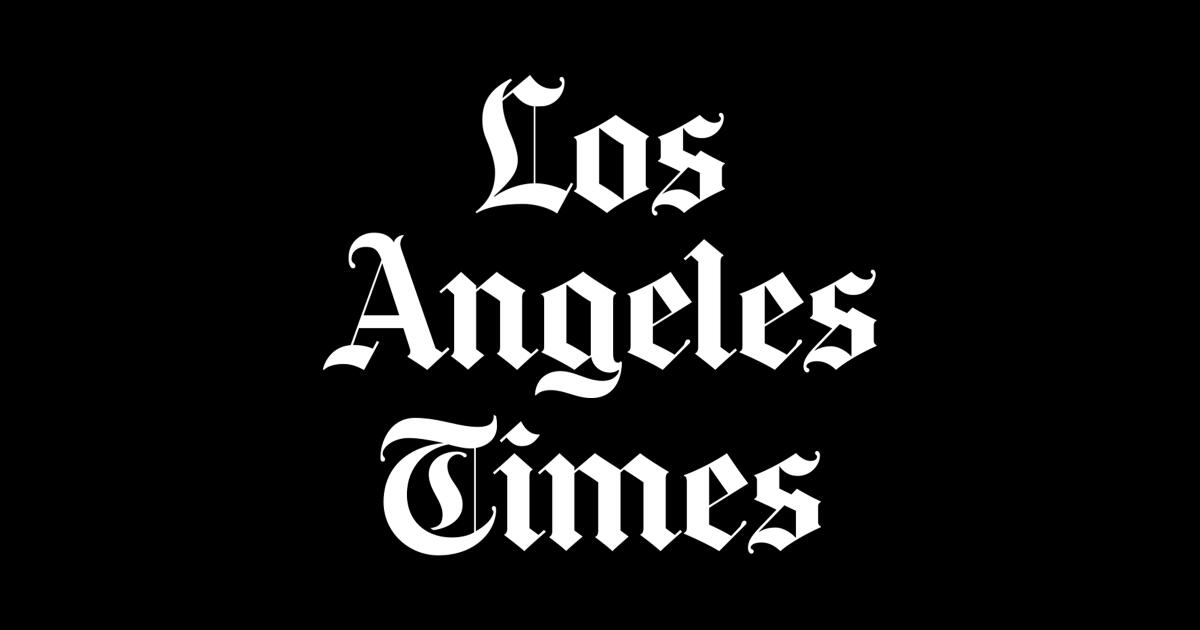
When you’re talking about Blondie frontwoman and style icon Debbie Harry, nothing is predictable. She appeared at our interview with opaque cat eye sunglasses and her signature shag haircut stylishly mussed. The smirk on her lips told me that our conversation would be memorable.
Decades before, she crashed onto the rock ’n’ roll scene with new wave and genre-bending band Blondie in 1970s New York City. It wasn’t without work and a lot of risk-taking— throughout her career, Harry has not been wanting to shy away from risks. From being the first musician to rap in a No. 1 Billboard song to pursuing a solo career and an acting career post-Blondie break-up, following her creative instinct is something that comes naturally.
“The seeds of creativity aren’t really just numbers and letters. It’s a lot more. It has to do with us. It has to do with soul,” Harry said.
Most recently, the fashion icon released a line of clothing inspired by her lifelong punk aesthetics and androgynous style. In collaboration with Oregon-based brand Wildfang, her most recent foray into fashion is indicative of one thing: Debbie Harry is still hungry to do more.
As Blondie gears up for its most recent album produced by John Congleton of St. Vincent, set to release early next year, Harry sat down for a conversation on her influential style in her new fashion line, how AI has nothing on her, doing the “wrong” thing and how that “old search for soul” is motivating her as she steps into the studio once again.
This interview has been edited for length and clarity.
I noticed in researching your career that there’s just so much reinvention. You’ve constantly reinvented yourself from a harmony singer to a lead singer in a band to soloist to an actress to band member again and now as a fashion collaborator. What do you think pushes you to constantly reinvent yourself and pursue new creative passions?
There are some things that I absolutely loved, but I didn’t take the chance. … At this stage in the game, I have to follow my rules. And I think for a young woman or a young girl to find that out about herself, it creates an awareness of who you are and your personality. And that’s sort of what young people do. They look for themselves, they look for who they are. And fashion can be a big part of that.
What would you describe as your style philosophy?
I think comfort. I want to put on what I’m going to wear and I want to feel right in it, and then I don’t want to have to think about it. I don’t want to have to be walking around the room making sure that my seams are straight, or my sleeves are right; I just want to have it on. I want to look great and I want to be comfortable in it.
For Wildfang, I got introduced to them through suits, and you know, I’ve always worn suits, like little boy things, and they’re fun. I think fun is an important thing to embody in what you do, that and some kind of silliness or fearlessness, that’s what turns people on, so I’m all for that. I’ve been doing it for so long, but I encourage younger artists to break the rules.
Something that I really love about your style is this very DIY approach to fashion that you’ve always had. Especially with the infamous zebra print pillowcase dress and other looks where you seem to tear things up and put different pieces together. How does this DIY approach translate for you today?
Sometimes when you start out, you have to experiment. And I’m really in favor of that. I think experimentation is the key to success, and that’s always been that way for me. I was sort of lucky in not having many options when I started and I did things that were wrong. They weren’t really styles at the time. They weren’t appropriate for the era. But doing things that you feel strongly about, coupled with the workability of a piece of clothing, even if it’s wrong, it could be right for you. So, I always tell people not to be afraid to do something that might be considered wrong.
I think that sort of applies to, as you were saying earlier, do it yourself, like taking that zebra striped pillowcase and making a hot little number out of it was the right thing. I don’t know, it just worked for me. I don’t know if everybody wants to be that individualistic. So that’s why finding a line of clothes that fits you right and suits your activities and your frame of mind, your mood, it’s all very, very personal, very important.
I wanted to talk about your new album. I’m really excited to hear it. I listened to “Pollinator,” and I really loved this very fresh, almost rebellious sound that permeated the music. How would you describe the essence of your upcoming album?
I think our tradition has always been to cover a lot of different styles and to embody some different moods. So in that respect, it’s a very traditional Blondie album. I think the thing that makes people carry on with us is that we’re excited about what we do, and we work hard at it, and it’s not sort of like, oh, well, I guess let’s do [an album]. We write songs. We write stuff that’s about our lives and about today.
I know for a fact that when I write a song with Chris [Stein], he usually comes in with a demo of the track. And then, this has happened from Day 1. I would say, “Chris, what are you thinking when you’re writing this music? What’s going through your head? Are you saying any particular phrase? Are you thinking of a particular word? Were you thinking about a special evening or a special event, a special movie?”
It’s very easy for him to come up with a definition in words. Many times, that would be a jumping-off point for me, with like “Heart of Glass” or “Dreaming.” More recently, we have a song on the new album called “A Man with No Face.” And so I asked him, “What was that root? What was your mantra? What were you thinking of?” And very often that led me in a really good direction.
So did he lead a lot of the writing, or was this a joint collaboration between the band for the album?
Yes, well, we had a lot of contributors. Glen Matlock [original Sex Pistols bassist] started playing bass with us a little while ago, and he contributed a song that is so terrific. It’s just a wonderful song, and it really sticks in your head. It reminds me of his contribution to the Sex Pistols; it has that feel to it. It’s a great, simple, three-chord, four-chord song with a great feel. It’s on the album, and it’s called “Sleepwalking.”
There’s also some really great dance music [in the album]. It’s very rock and roll, but yet, we’ve always managed to squeeze in elements of other sounds in music and other styles of music, other moods of music. And Blondie has always done that. We’ve always embodied the present. So it feels like Blondie.
That genre-blending is obviously a recurring theme in Blondie’s music. Between having the first [Billboard] No. 1 rap song to the reggae influences and playing around with styles in general, I notice that you never really let genre limit you. What are your thoughts on breaking the barrier of genre and not staying within a musical box?
I think that there was a time when it wasn’t done, and I think that was back in the ’70s. It’s quite a few years ago when the styles weren’t blended. If you did a reggae album, you did a reggae album, and if you did a rock album, you did a rock album. But then we started mixing in influences because we were so urban. These were the influences that were around us [in New York City], and it just seemed normal; I don’t know how else to explain it. These were the things that we liked.
We liked Donna Summer, we liked Giorgio Moroder. We liked all these different varieties of sounds and styles. And it just fed into what we were doing. We were at a time, fortunately, where we went from analog to digital, and it made so many more things possible that everybody today is really used to all the things that I’m saying, because that’s what’s done. This is what it’s all about. But there was a time when it was about discovery.
It goes along with my ideas about what I was saying about fashion, discovering what you are, who you are and what you want to look like. It sort of applies to what we did with music. We had feelings about rap. We had feelings about reggae. We had feelings about dance music and club music. It was part of our underpinnings, so to speak. And so therefore it became obvious in the music when the music sort of transcended just a basic rock four-by-four.
The world has become a much smaller place because of digital communications and the improvement in communication. If only that communication went beyond the arts and so that we had this understanding in other aspects. I mean, we have intercultural understandings in food and fashion and music and art, and we should have it in every phase of our lives.
How do you think Blondie as a band and as a collaboration between artists is growing and changing over the years?
Well, one thing I know is practice. “Practice and you get to Carnegie Hall” is the old saying. But, when you keep playing, you just get better and better at what you do. And I think that applies to anything, like writing. I mean, the more that you’ve written, the better you become at it, and then the easier it is for you to say things that resonate within you, and that take place in your life and your observation of life.
And we’re lucky [to have new technology] now, because the brain works very quickly. We see things and we can change things very instantly. Nowadays, you can actually make your thoughts fact just as easily. And so I think it serves us well.
I remember when cassettes became a threat to vinyl. And how the guys from the record companies were all sort of going, “Oh my God, anybody can copy an album and make it into a cassette, and then they don’t have to buy the album!” So we weathered that storm, and then cassettes went to CDs or 8-tracks, and it’s sort of the same thing now when we’re looking at AI. So everybody’s saying, “Oh my god, AI! What will we do?”
Well, AI is much more comprehensive than any of those transitions. And I have seen AI-generated pictures of me, and I look at them and I just say, “Oh, well, that’s AI, that’s not me.” I can tell. So, I think people are worried about it, and I don’t know how much time anyone should worry. The seeds of creativity aren’t really just numbers and letters. It’s a lot more. It has to do with us. It has to do with soul. And, bring back that old search for soul. That’s something that was very obvious in the 1960s, to make something with soul. And basically that’s what the contrast with AI is. I’ve been played songs that were built on an algorithm, and I found them kind of boring.
So you’re personally not worried about AI. You feel like it’s not a threat to musicians, because music needs soul?
That would be my preference. But I think that somewhere, somehow along the line, somebody will come up with an AI piece of music or artwork that is stunning.
I think if you do stuff that’s mistakes or wrong, that becomes the best art of all. I can remember, when I was in school, centuries ago, that we’d go down and we’d buy these little 45s. Very often, the B-side would have mistakes, they would never have been pressed or released in today’s world, but something about mistakes that lead to a “Oh well, maybe we can use that?” moment, and it just grows from there.
I read this really beautiful interview that you did with Gaga 10 years ago, and in it, she was expressing how much you inspired her and how much seeing a lead female musician made a big difference for her in her career. How is that for you to see your impact on younger artists and see them taking some nods from you in their work?
It’s great. I mean, we did the same thing, we all do that, we absorb what’s around us. I don’t think that I want to take eight bars of so and so’s song and throw them into mine, but the impetus, or the feeling of their song, triggered something in me. Sometimes if I go to a live show, I’ll come out with maybe just a beat that they’re playing that I’ve really liked, and that will inspire a bit of a lyric. This creates this sort of a mantra-like effect, where you’re just feeling that thing, and then a phrase comes to your head and your mind because of something that happened to you that day or that week. And it’s like puzzle pieces. It’s really fun. It’s really fascinating.
But no matter what was your inspiration, you are going to describe something only like the way you would do it. And that’s what the value is for me.
Is there something that you’re excited for in this new stage of your career, and something that you’re looking forward to?
Well, I’m excited for the album to come out. [“Am I releasing the title?” she asks her manager beside her.] Okay, we’re calling it “High Noon.” And it’s very funny. I was just playing one of my old songs, very old songs, and I actually used that name, “High Noon,” in a lyric. So there is a continuity with the way that we think and the way that we lead our lives. And it’s very important. And it’s a building block kind of thing. It’s Legos. That’s right, our life is nothing but Legos.
I was really curious, was there was ever a pivotal moment in your career that really impacted the way that you approach music or approach creative pursuits?
Well, I don’t know if there was any one extreme, pivotal moment, but I think working in an ensemble situation was a really, really valuable lesson. I think when you’re in the recording studio, it’s very intense and very focused. It’s like when you catch someone on a candid camera, like a candid film or video; it’s very revealing.
Being in the studio like that, I think that a pivotal moment for me was to not be afraid of that, to not hold on to my idea for fear that anything else would be terrible, but sort of see it as building blocks. I think that’s what art is about, it’s something that actually grows, it’s almost like it’s another level of being. It’s about consciousness, I suppose. Embodying all the stuff that’s around you that you can’t really escape. You can escape it if you isolate yourself, and make yourself stick to something because that’s what you know, but I think that searching and trying to express yourself is art.
Andy Warhol, when he started out, was so criticized in the art scene for using print work instead of doing everything by hand. Using that medium, he was really heavily criticized for that. In today’s world, it’s nothing, it’s normal. He took a chance and did something that’s “wrong,” but absolutely right. I love that idea. Especially coming out of the “punk thing,” that little era, that little moment, that little glitch in time, when you had people like the Talking Heads doing what they were doing, I think that was a breakthrough.
But even Gaga, with the way that she “pounds” music out, I think at one time that would’ve been considered “wrong.” The way that she is a pianist, and she will stand up and play with her knee, that kind of stuff. And, well, Little Richard did that too, and Elton John, and these are expressions of passion. That’s the complete value, is passion.
Is passion what motivates you to continue making music, or what would you say is your motivation?
I have to feel right about it; it has to feel like an automatic thing. I’m very fortunate that I’m very musical, that I like hearing music. I like odd chord changes; when I was singing with the Jazz Passengers, that was sort of like going to college for me, they used all kinds of time signatures and harmonics and things. That was really exciting for me. And, I don’t know, I’m just very lucky, I guess. I’m lucky I get to enjoy oddities in my life. I’m going to keep creating until I can’t anymore.